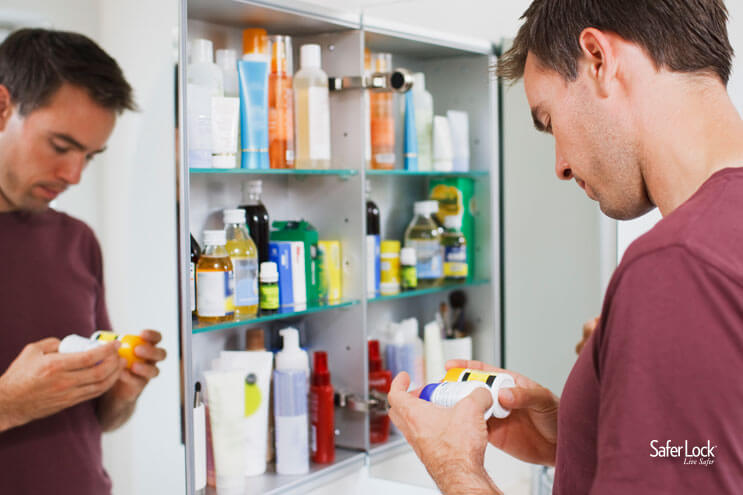How much screen time do your kids get each day?
Tablets, smartphones, gaming consoles, and computers: most kids from the ages of 8 to 12 have access to one or more of these gadgets at any given time. It’s no wonder this same age group spends about 4 to 6 hours a day online.
More startlingly, our teens are spending a whopping 9 hours a day watching or interacting online, and this number grows each year.
Nearly all (95%) teens aged 13-17 use social media, which has been called “harmful” to teens' mental health by the Surgeon General and the American Psychological Association (APA).
Nearly one-third of teens use it “almost constantly.”
Although internet access can be a great help in developing and educating kids, bringing potential benefits in terms of connection and creativity, it can also be extremely dangerous for children and teens.
What Apps Are Kids Using?
Your kids spend almost as much time using social media each day as they spend learning in school. What are kids doing online?
The most widely used platforms among US teens include:
- YouTube
- TikTok
- Snapchat
According to Pew Research, nearly 1 in 5 teens report being on YouTube and TikTok “nearly constantly,” while 70% of teens report visiting Snapchat and Instagram daily.
But that’s not the only thing teens are doing online.
While the majority of teens use social media apps for entertainment and connection, 85% of teens report playing online video games, and half of them do so on a daily basis.
72% of teens who play video games say they play them to spend time with others. And 47% have even made a friend online from playing.
What do social media and online gaming have in common? They both allow interaction with almost anyone—even people you have never met.
Online Risks: Cyberbullying, Exploitation, And Drug Use
All of this screen time increases risks for our kids. The most dangerous of these are cyberbullying, declining mental health, exploitation, and easy access to illicit drugs.
Cyberbullying Leads to 4,500 Teen Suicide Deaths Per Year
Cyberbullying is pervasive in the online space.
- 80% of all teens think harassment over video games is a problem for people their age.
- 44% of all internet users have experienced harassment online.
- Name-calling is the most common form of cyberbullying.
- Kids are most likely to be bullied on YouTube, Snapchat, TikTok, and Facebook.
The impact of cyberbullying can be severe. Research shows that children who experience cyberbullying are twice as likely to attempt suicide as non-bullied peers. 20% of teens and tweens who are cyberbullied consider suicide, while 10% actually attempt it. The result is approximately 4,500 teen suicide deaths per year.
Social Media May Negatively Impact Mental Health
Research has shown that peer pressure is a significant driving force behind teen social media addiction. Once online, peer pressure continues to influence kids on social media platforms, where filtered and curated views of other people’s lives lead to comparisons, unrealistic expectations, insecurities, and increased mental health issues.
Research suggests teens who used social media for three or more hours each day faced twice the risk of having negative mental health outcomes, including depression and anxiety symptoms.
Declining teen mental health has been linked to increases in substance use as well as deaths from overdoses and suicide.
Children and Teens at Risk for Online Exploitation
Cyberbullying and peer pressure aren’t the only dangers for kids on social media platforms, gaming platforms, and apps.
The Department of Homeland Security (DHS) Know2Protect campaign has raised the alarm about the risk of Online Child Sexual Exploitation and Abuse (CSEA), an insidious crime in which predators target children and teens online.
An increasing number of sextortion cases, in which children or teens are tricked or coerced into sharing nude or sexual images, have led to the death by suicide of 46 teenage boys since 2021.
If your child is being exploited online, do not delete messages, images, or videos from predators (and do not forward any sexually explicit images or videos). You’ll want to have evidence to turn over when reporting the crime.
Report online exploitation to the Know2Protect Tipline at 833-591-KNOW (5669) and, in an emergency, call 911.
DEA Warns of Drug Trafficking Over Social Media
It’s never been easier for kids to access illicit drugs and counterfeit prescription medications, warns the U.S. Drug Enforcement Agency (DEA). Drug trafficking is happening on social media platforms, where teens can purchase drugs and have them delivered to them just like any other good or service.
Counterfeit pills and illicit street drugs are often laced with deadly fentanyl; DEA lab testing has revealed that as many as 7 out of 10 fake pills seized contained a lethal dose of the synthetic opioid.
Learn more about the dangers of fentanyl.
The DEA is so concerned about the role that social media plays in the buying and selling of illicit drugs that it released a parental reference guide decoding the emojis typically associated with online drug deals. See “Emoji Drug Code Decoded” by the DEA.
Social Media Rewards Risky Behavior
It wasn’t that long ago when parents were wondering why teenagers everywhere were consuming laundry detergent pods, a poison that can burn throats, damage airways, and lead to seizures or even death.
Social media can make teens more vulnerable to substance use, alcohol use, risky behavior, and violence.
Including dangerous social media challenges widely adopted by teens.
Studies explain a two-step process where risky behavior is likely to be adopted and continued by teens.
- First, a teenager views “likes” or comments on a peer or influencer’s social post as an indication of socially desirable behavior. This phenomenon is known as “behavioral display.”
- Next, a teen mimics this socially desirable behavior and receives immediate feedback in the form of likes or comments. This is known as “behavioral reinforcement.”
Social media provides the perfect environment for this two-step process, allowing teens to be influenced by the behaviors of their peers, find new behaviors to adopt and continue (even dangerous social media challenges or other risky behaviors), and receive immediate feedback that rewards conforming to peer behavior.
Teens are more likely to drink alcohol and use marijuana if their friends post about it on social media platforms like Snapchat and Instagram.
Find tips to prevent teen substance abuse.
How to Keep Kids Safe Online
Keeping kids safe online is a constant battle of keeping up with the newest and best safeguards and technology. Trying to safeguard our children can seem overwhelming across many different devices, apps, and social networking sites.
You can take action to help keep your kids safe online.
Talk About the Risks
DHS’s Know2Protect campaign encourages parents to have the talk, letting children and teens know the risks they face online. “Like teaching a child how to safely cross the street, continuous discussions and reminders are key to safe online habits.”
Discover tips for talking to teens about online risks at Know2Protect.
Set Controls Across Networks, Devices, and Platforms
Set all apps, games, and devices to private.
Parental controls are available across networks, devices, and apps.
You can visit InternetMatters.org for detailed information on setting parental controls for devices, including smartphones and tablets, broadband and mobile networks, gaming platforms, and search engines.
Use Parental Control Apps
Many parental control apps can offer you even more control over your teen’s online activities, including social media monitoring. The top-rated parental control apps offer features such as:
- App management
- App usage history reports
- Texting history reports
- Screen-time management
- Content filter
- Website blocker
More Ways to Protect Kids
Helping kids navigate the perils of online safety takes more than setting parental controls. Online safety plays a crucial role in protecting mental health, preventing substance use, safeguarding against online predators, and avoiding risky behaviors.
- Talk with your kids about who they interact with while on social media or gaming devices.
- Have conversations about bullying and encourage them to talk with you if they feel threatened.
- Make sure their screen name doesn’t reveal any personal information, especially their real name, birthday, or address.
- Check the games they are playing. Get familiar with them and their ratings.
- Check their friend list on their social media accounts.
- Turn off location data services on social media and nonessential apps.
Obviously, technology is a necessity in our world, and it continues to get more and more advanced. It can become increasingly difficult to keep up with all the newest gadgets, making it even harder for parents and guardians to keep kids safe.
Kids are growing up in a digital world, which presents an entirely new set of parenting challenges. The best way to protect your children from online risks is to remain vigilant and informed. Have honest talks with your kids, establish safeguards and protocols, and remain persistent. You may not be able to protect them entirely from every online risk, but you can equip them with the tools to navigate social media platforms, online games, and apps safely.
This blog has been updated for 2025 with new insights and data to help parents keep kids safe online.



